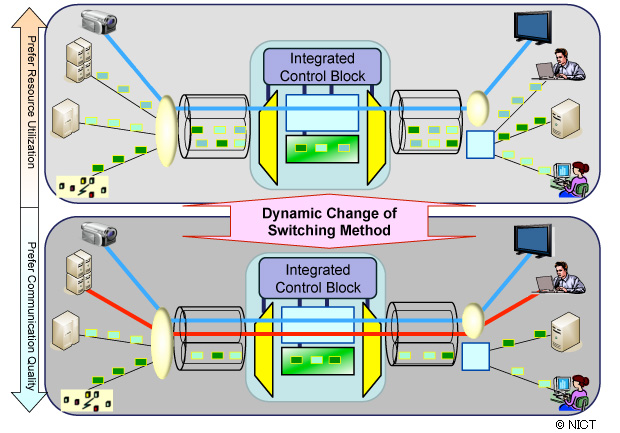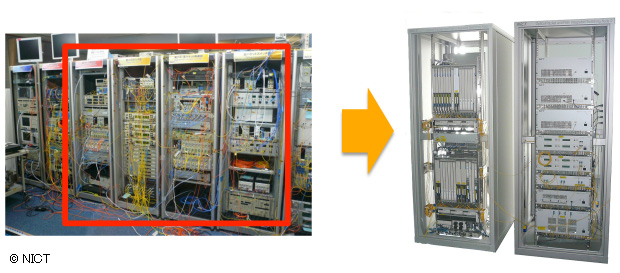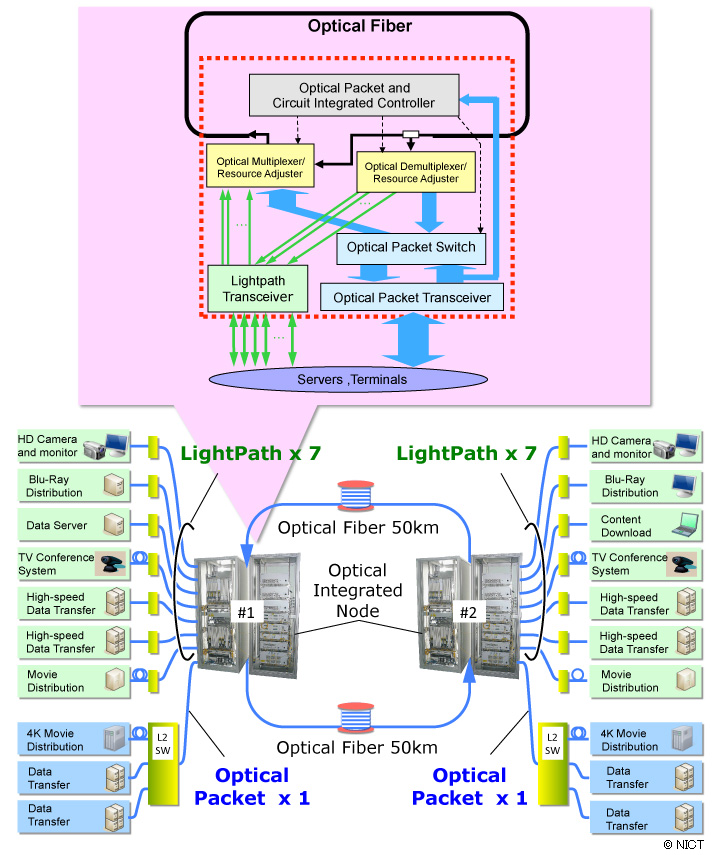NICT has been conducting advanced research since 2008 on the “optical packet and circuit integrated network technology” (Fig. 1) , which enables users to make a flexible choice in either high-speed and low-cost service or high-quality service without delay and data-loss based on their usage scenes, and last year NICT succeeded in verification test with the optical packet and circuit integrated proto node.
In the previous optical integrated proto node being simply put individual lab equipment, however, it was difficult to conduct verification tests under the real network environment since the equipment behaves in an unstable way by the influence of rapid changes in the packet flow interval or temperature variation especially in the optical packet network. Testing with using such an unstable node equipment required high technical knowledge about optical units and also required operations by networking experts even when setting up the network data transfer control. Therefore, NICT has been working to develop the equipment that can conduct verification tests in the real environment for the realization of “optical packet and circuit integrated network”.





























